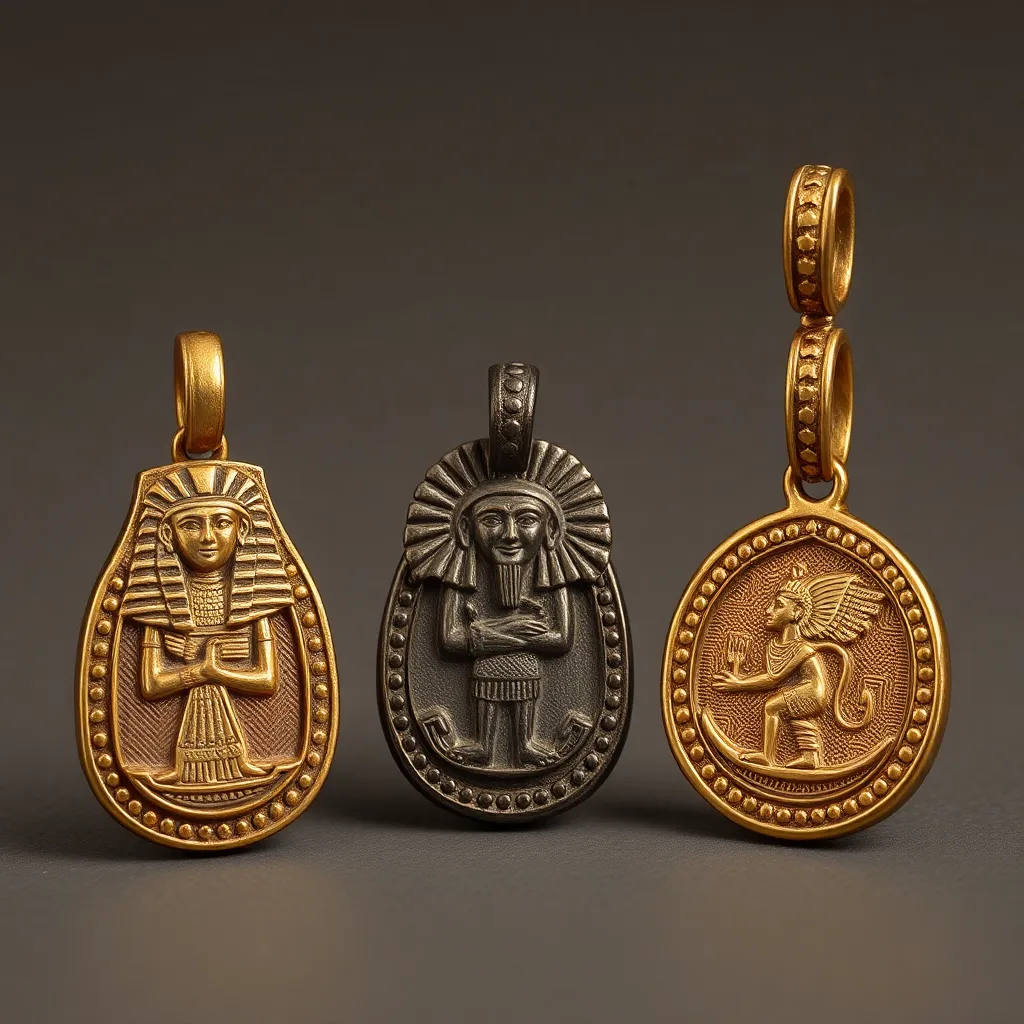Amulets for Wealth and Prosperity in Ancient Egypt: An In-Depth Exploration
I. Introduction
In ancient Egypt, wealth and prosperity were not merely measured in material possessions but were also deeply intertwined with spiritual beliefs and divine favor. The Egyptians held a profound understanding of the relationship between the physical and spiritual realms, leading them to create various objects that could attract wealth and ensure a prosperous life.
Amulets played a crucial role in this belief system, serving as protective charms and symbols of good fortune. They were thought to harness divine power and influence one’s fate, particularly concerning wealth and prosperity.
This article explores the significance of amulets in ancient Egyptian culture, their historical context, symbolism associated with wealth, types of wealth-related amulets, rituals surrounding them, archaeological findings, and their modern interpretations.
II. Historical Context of Amulets in Ancient Egypt
Amulets were integral to daily life and the afterlife in ancient Egypt. They were believed to provide protection, health, and prosperity, and were often placed in tombs to accompany the deceased into the afterlife.
The design and materials of amulets evolved throughout Egyptian history, influenced by changing beliefs, artistic styles, and the availability of materials. Initially crafted from natural materials like stones and clay, amulets later included metals such as gold and silver, which were associated with divine qualities.
Several notable periods and dynasties shaped the development of amulets, including:
- The Early Dynastic Period (c. 3150–2686 BC)
- The Middle Kingdom (c. 2055–1650 BC)
- The New Kingdom (c. 1550–1070 BC)
III. Symbolism of Wealth and Prosperity in Ancient Egypt
Various symbols were associated with wealth and prosperity in ancient Egypt, many of which were incorporated into amulets. Key symbols included:
- The Ankh: Symbolizing life and immortality, the ankh was often associated with prosperity.
- The Scarab: Representing rebirth and transformation, the scarab beetle was also linked to good fortune.
- The Lotus: A symbol of creation and birth, the lotus flower represented the unfolding of life and abundance.
The connection between spirituality and material wealth was a fundamental aspect of ancient Egyptian belief. Prosperity was seen as a sign of divine favor, and individuals often sought blessings through rituals and offerings to the gods.
IV. Types of Amulets for Wealth and Prosperity
Amulets for attracting wealth took many forms and were crafted from various materials:
- Common Forms: These included pendants, rings, and figurines.
- Materials Used: Common materials included faience, gold, silver, and semi-precious stones.
- Specific Amulets: The gold scarab was a popular amulet specifically designed for attracting wealth and fortune.
Inscriptions and engravings on amulets also played a crucial role in enhancing their power. Often, these inscriptions invoked the names of gods or included spells intended to attract wealth and prosperity.
V. Rituals and Practices Associated with Wealth Amulets
The activation and consecration of amulets were significant rituals in ancient Egyptian culture. Priests would often perform specific rites to imbue the amulet with divine energy, making it effective in attracting wealth.
Rituals for invoking wealth included:
- Offerings to deities associated with wealth, such as Osiris and Hathor.
- Chanting of spells and prayers focused on financial abundance.
- Placing the amulet on altars during significant festivals or celestial events.
The role of priests and practitioners in these rituals was vital, as they were seen as intermediaries between the divine and the earthly realms.
VI. Case Studies: Archaeological Finds of Wealth Amulets
Numerous archaeological findings have shed light on the use of wealth amulets in ancient Egypt. Notable discoveries include:
- The Tomb of Tutankhamun: Rich in artifacts, including gold amulets designed for wealth attraction.
- The Valley of the Kings: Many tombs contained amulets buried with the deceased, reflecting their status and wealth.
Analysis of these amulets often reveals intricate inscriptions that provide insights into the beliefs and practices surrounding wealth in ancient Egyptian society. Furthermore, the materials and craftsmanship of the amulets can indicate the socio-economic status of the individual they belonged to.
VII. Amulets in Modern Interpretations and Practices
The influence of ancient Egyptian amulets extends into contemporary beliefs regarding wealth. Many modern spiritual practices incorporate the symbolism and design of ancient amulets to attract prosperity.
Modern reproductions of these amulets serve both decorative and spiritual purposes, often believed to carry the same protective qualities as the originals. Additionally, the continued relevance of amulets in spiritual practices today underscores their lasting impact on cultural history.
VIII. Conclusion
Amulets for wealth and prosperity in ancient Egypt were not just artifacts; they embodied the complex interplay between spirituality and material wealth. Through the exploration of their historical context, symbolism, types, rituals, and modern interpretations, we gain a deeper understanding of their significance.
The legacy of ancient Egyptian beliefs in wealth and prosperity continues to resonate today, reminding us of the enduring nature of cultural practices and the human desire for abundance and security.
Ultimately, the significance of amulets in cultural history lies in their ability to connect the past with the present, reflecting humanity’s ongoing quest for prosperity and divine favor.




